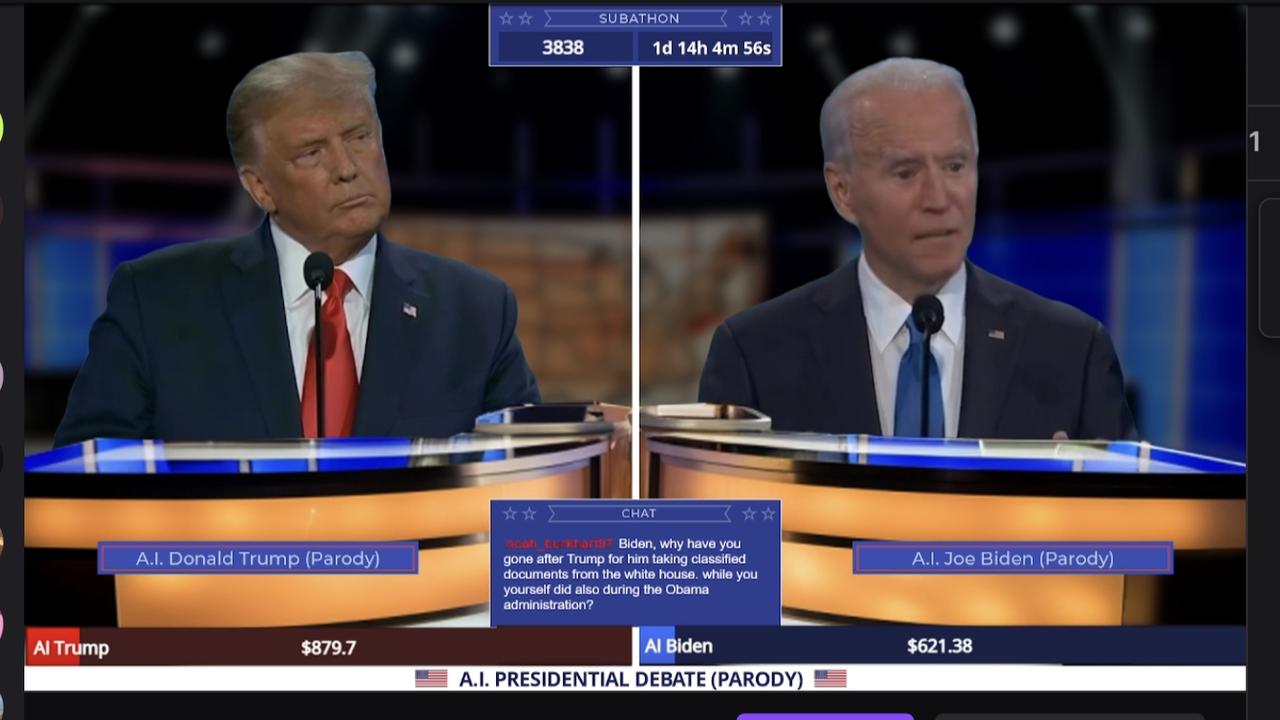The 2020 Election: A Deep Dive Into Trump And Biden's Platforms

Table of Contents
Economic Policies: A Tale of Two Approaches
The 2020 election showcased fundamentally different approaches to economic policy. Trump's platform emphasized deregulation and tax cuts, while Biden advocated for increased government investment and a fairer tax system.
Trump's Economic Platform:
Trump's economic strategy centered on:
- Significant Tax Cuts: These cuts, particularly benefiting corporations and high-income earners, were a cornerstone of his approach. The Tax Cuts and Jobs Act of 2017 significantly lowered corporate tax rates.
- Deregulation: His administration pursued a policy of deregulation across various sectors, aiming to stimulate business growth and investment.
- Trade Protectionism: Trump implemented tariffs and trade restrictions, aiming to protect American industries and jobs. This involved renegotiating existing trade deals and imposing tariffs on goods from specific countries.
While proponents argued these policies spurred economic growth (GDP growth did see increases in certain periods), critics pointed to rising national debt and increased trade tensions as negative consequences. For example, while GDP growth was observed during parts of his term, the national debt also increased substantially.
Biden's Economic Platform:
Biden's economic plan focused on:
- Increased Taxes on Corporations and High-Income Earners: He proposed raising taxes on corporations and individuals earning over $400,000 annually to fund government investments.
- Infrastructure Investment: A significant portion of his platform involved a substantial investment in infrastructure projects, aiming to create jobs and modernize the nation's infrastructure.
- Support for Labor Unions: Biden expressed strong support for labor unions and workers' rights, aiming to strengthen the bargaining power of workers.
Supporters argued that Biden's proposals would lead to more equitable economic growth and a stronger middle class, while critics raised concerns about potential negative effects on business investment and economic competitiveness. Independent economic analyses offered varied projections on the potential impact of his proposed tax increases and infrastructure spending.
Healthcare: Contrasting Visions for American Healthcare
The 2020 election also presented starkly different visions for American healthcare. Trump sought to dismantle the Affordable Care Act (ACA), while Biden aimed to expand and strengthen it.
Trump's Healthcare Platform:
Trump's healthcare approach focused on:
- Repealing and Replacing the ACA: A central promise was to repeal and replace the ACA, although concrete replacement plans remained elusive throughout his presidency.
- Increased Access to Short-Term Health Plans: His administration promoted the expansion of short-term health plans, often criticized for offering limited coverage.
- Emphasis on State-Level Control: The administration advocated for shifting more control over healthcare regulation to individual states.
The potential consequences included reduced healthcare coverage for millions of Americans and increased healthcare costs for many.
Biden's Healthcare Platform:
Biden's healthcare plan aimed to:
- Strengthen and Expand the ACA: He sought to build upon the ACA, expanding its coverage and reducing premiums.
- Add a Public Health Insurance Option: This would allow Americans to buy into a public health insurance plan, increasing competition and choice.
- Lower Prescription Drug Costs: A key focus was on lowering the cost of prescription drugs through negotiation and regulation.
The potential benefits included increased access to affordable healthcare, improved healthcare quality, and reduced healthcare costs for many Americans, although potential increased government spending was a point of criticism.
Environmental Policies: Different Approaches to Climate Change
The candidates' approaches to environmental issues and climate change were dramatically different.
Trump's Environmental Platform:
Trump's administration:
- Withdrew from the Paris Agreement: This signaled a retreat from international cooperation on climate change.
- Rolled Back Environmental Regulations: Numerous environmental regulations were weakened or eliminated, impacting air and water quality, and protection of endangered species.
- Prioritized Fossil Fuels: The administration emphasized fossil fuels, despite growing concerns about climate change.
These actions had significant environmental consequences, accelerating climate change and potentially harming public health.
Biden's Environmental Platform:
Biden's plan aimed to:
- Rejoin the Paris Agreement: This demonstrated a commitment to international cooperation on climate change.
- Invest in Renewable Energy: Significant investments were proposed in renewable energy infrastructure, aiming to transition to a cleaner energy system.
- Set Ambitious Emission Reduction Targets: He proposed ambitious targets for reducing greenhouse gas emissions, aiming to achieve net-zero emissions by 2050.
These policies aimed to mitigate climate change and transition to a sustainable economy, although the economic costs and feasibility of achieving such ambitious targets were subjects of debate.
Social Issues: Key Differences in Approach
Focusing on immigration for brevity, we see substantial differences:
Immigration: Trump's Stance
Trump's immigration policies emphasized:
- Border Wall Construction: A major focus was on building a wall along the US-Mexico border.
- Stricter Immigration Enforcement: Increased enforcement of immigration laws and stricter border security measures were implemented.
- Restrictions on Legal Immigration: Limits were placed on legal immigration from certain countries.
Immigration: Biden's Stance
Biden advocated for:
- More Humane Immigration Policies: A more humane approach to immigration, emphasizing due process and protecting asylum seekers.
- Path to Citizenship for Undocumented Immigrants: He proposed a path to citizenship for undocumented immigrants who meet certain requirements.
- Modernizing the Immigration System: Updating and reforming the US immigration system to be more efficient and equitable.
Conclusion: Choosing Your Path in the 2020 Election
The 2020 election presented voters with distinct choices regarding economic policy, healthcare, environmental protection, and social issues. Trump's platform prioritized deregulation, tax cuts, and a more protectionist approach to trade, while Biden advocated for increased government investment, stronger social safety nets, and a more active role in addressing climate change. Understanding the 2020 election platforms is crucial for informed civic participation. Further research into the candidates' 2020 election platforms is recommended to ensure a well-informed vote in future elections.

Featured Posts
-
 Whats Preventing The Top 10 Nba Teams From Winning
May 15, 2025
Whats Preventing The Top 10 Nba Teams From Winning
May 15, 2025 -
 Senators Vs Maple Leafs Live Stream Watch Game 2 Of The Nhl Playoffs Online
May 15, 2025
Senators Vs Maple Leafs Live Stream Watch Game 2 Of The Nhl Playoffs Online
May 15, 2025 -
 Repechage Lnh Decentralise Bilan Et Reflexions
May 15, 2025
Repechage Lnh Decentralise Bilan Et Reflexions
May 15, 2025 -
 Essential Facts Wayne Gretzkys Life And Legacy
May 15, 2025
Essential Facts Wayne Gretzkys Life And Legacy
May 15, 2025 -
 Biden And Trump Contrasting Approaches To Domestic And Foreign Policy
May 15, 2025
Biden And Trump Contrasting Approaches To Domestic And Foreign Policy
May 15, 2025
